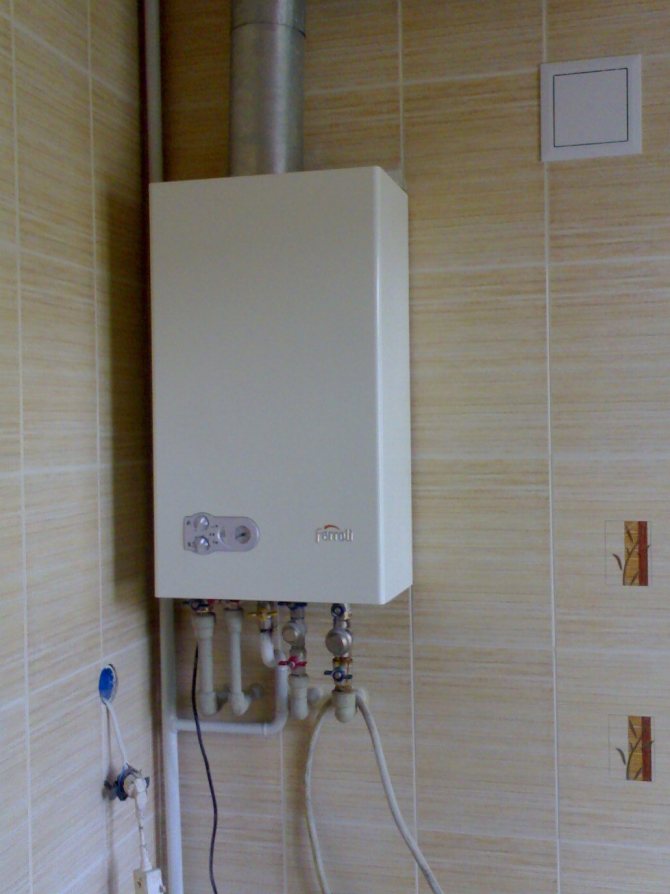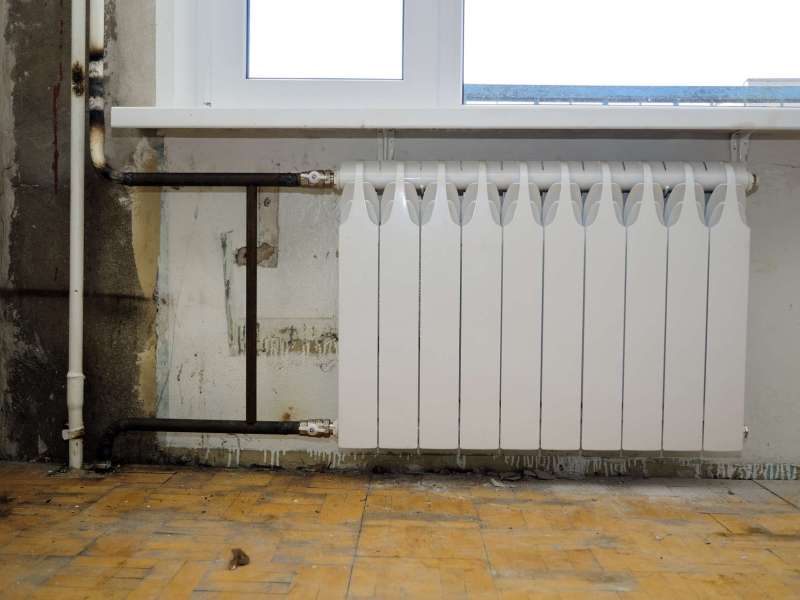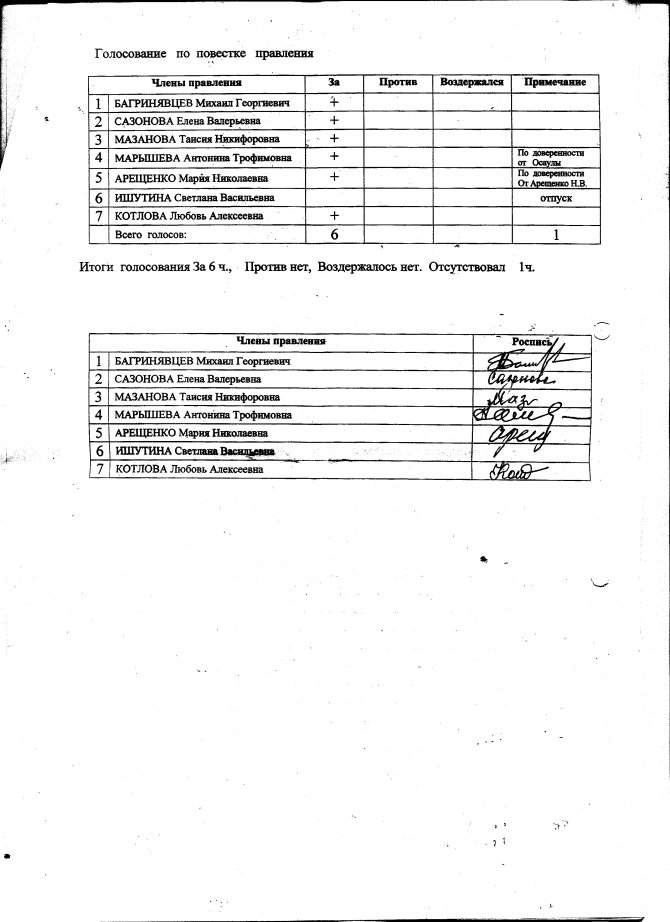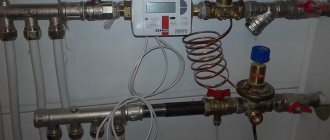What the legislation testifies
By all the rules, the possibility of switching to individual heating in a high-rise building is not prohibited.
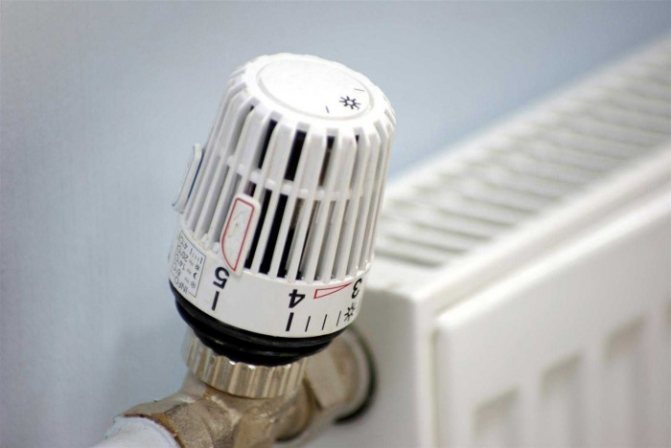
But, in order to have no complaints against the tenant who has rejected the central heating, it is necessary to resolve a number of legal issues:
- The owner of the apartment needs to draw up a written statement about the upcoming redevelopment in the heating system;
- Prepare a registration certificate for a dwelling (apartment). It is the option that the owner receives after purchasing it. Since it is on it that they will judge the possibility of switching to autonomous heating;
- Be sure to have a certificate of ownership;
- Prepare a project for reorganization;
- Obtain written consent from both adults living together with the owner and all neighbors at the entrance to the possibility of redeveloping the heating;
- Obtain consent to exit the centralized heating of the apartment from the organization responsible for the preservation of architectural monuments. If a refusal is issued from this organization, then it makes no sense to apply to other institutions;
- In cases where the owner of a dwelling in an apartment building is going to connect individual gas heating, then a permit from the gas service will also be required;
- In addition, the entire list of documents listed above with all approvals will need to be transferred to the fire brigade. They must fully study it and also give their consent.
Only upon obtaining permits from all instances can we talk about the rejection of centralized heating in an apartment building.
What the law says
The law does not prohibit residents of apartment buildings from refusing central heating services. However, legal issues need to be resolved before shutting down the system. The main nuance faced by apartment owners who want to use modern autonomous systems is the features of the building improvement.
In simple terms, the central heating system of an apartment building is a single network that has common risers, piping, fittings and heat meters. As a result, disconnecting one apartment from such a network leads to a malfunction of the system as a whole. In order to disable one unit, a radical reorganization and rebuilding of the entire network is required.
The elements of the central heating system of the building are its property, and its composition is determined by the owners, management companies, etc. The issue of the possibility of abandoning central heating should be decided at the general meeting of residents, if the property has been identified as belonging to the house. This requirement is laid down in the Housing Code of the Russian Federation. In accordance with Art. 36, the disconnection of one apartment from common communications leads to a reduction in the common property of the building. This requires serious reconstruction, so the issue cannot be resolved on an individual basis.
Unauthorized, that is, without obtaining permits, it is impossible to disconnect from general engineering networks. Dismantling of heating elements and disconnection of a separate apartment from the water circuit should be carried out by specialists on the basis of the decision made.
Why is it necessary to agree on a new project of the heating system?


No organization will give permission to switch to individual heating without its project.It will not be possible to draw up a project on an independent basis and without an engineering education. It is best to contact a specialized institution for help.
The project must meet the following requirements:
- Show the role of a certain area (apartment) in the general heating system of the house (when switching to an individual one);
- Possibility of equipping an apartment with a heating boiler in terms of fire safety;
- Calculations for the residual elements of central heating (sun beds and risers), for which you will have to pay in the general order, despite the transition;
- Calculations of a thermohydraulic nature.
Only if all of the above calculations fit into the permissible norms, you can give the finished project for the approval procedure. If, according to the norms, the prepared document does not correspond, then the individual will be refused.
Is it possible to opt out of district heating?
The main problem if you want to get rid of the central heat supply is the need to rebuild the entire heating structure of the house.
The central heating network in the house has common communications and metering devices. Disconnecting one apartment from the general network, you can break the whole circuit.
The elements that make up the centralized heating of the building belong to the common property. It is possible to disconnect one room from the central heating system only by obtaining permits, which must be provided at the place of demand.
The disassembly of the system is carried out by employees of the enterprise. If you cut off the batteries yourself, this can lead to an unpleasant result, because they will force the radiator to be connected back and write out a fine.
Is it possible to refuse central heating for residents of the entire apartment building?


Nowadays it is far from uncommon when residents in an apartment building have a desire to turn off centralized heating. Of course, it is easier for higher-level organizations to meet when this is the opinion of the majority, and not of one individual.
But you still need to know about the pitfalls that you can face. Otherwise, the refusal of the opportunity to switch to autonomous heating is provided to everyone who applies.
- It is necessary to hold an unscheduled meeting of all the owners in the apartment building and resolve the issue by voting on the possibility of all abandoning central heating. The decision must be necessarily recorded;
- The next step should be to draw up an application with a request to turn off the central heating in an apartment building, signed by all apartment owners;
- The minutes with the decision of the meeting and the application are forwarded to the local self-government body, under which a commission was created to agree on this issue. She has the right to refuse to the owners of residential premises if the introduction of an autonomous mode will cause a malfunction in the work of the microdistrict heat supply. And in those cases when the work of electric and gas mains does not provide for an increase in the load;
- If the decision is positive, the commission must issue the responsible representative with a list of institutions, the technical conditions of which must be observed when drawing up the project;
- The resulting specifications should be submitted to the drafting organization;
- The completed project must be approved by each institution from the following list:
- an energy company;
- heating network;
- gorgaz;
- housing organization;
- the architectural department.
- After agreeing on the project, it must be transferred to a licensed organization that will be responsible for carrying out the work;
- After the redevelopment work is completed, they must be accepted by all the organizations listed above.
Only by joint efforts, having carried out this huge work on redevelopment of the heating system, it will be possible to save your budget in a real, and most importantly, legal way.
Package of documents


Housing Code of the Russian Federation
Art. 26 of the Housing Code states that any owner of an apartment in an apartment building has the right to disconnect from central utilities. To do this, a number of documents must be submitted to the coordinating bodies:
- Statement. You can write it in any form.
- Technical passport of the disconnected apartment.
- Housing title documents.
- Written consent of all adult residents living in the apartment.
- Conclusion on the possibility of re-equipment.
This package of documents is required to attach a reorganization project, which must be developed by specialists and also agreed with the relevant authorities.
Project
The redevelopment project is serious technical documentation. It is impossible to draw up such a document on your own. It will require a mandatory appeal to specialists. The basis for the development of a reorganization project are calculations showing the effect of heating system elements located in the disconnected apartment on the functioning of communications as a whole.
In addition, the following are performed:
- Thermal hydraulic calculations.
- Calculation of residual heating from risers and loungers.
If the calculations show that there is a technical possibility of shutdown, the project can be submitted for approval. But if the changes made to the communications of the house can have a negative impact on the level of thermal regime in other apartments, the project will most likely not be approved.
You should know!
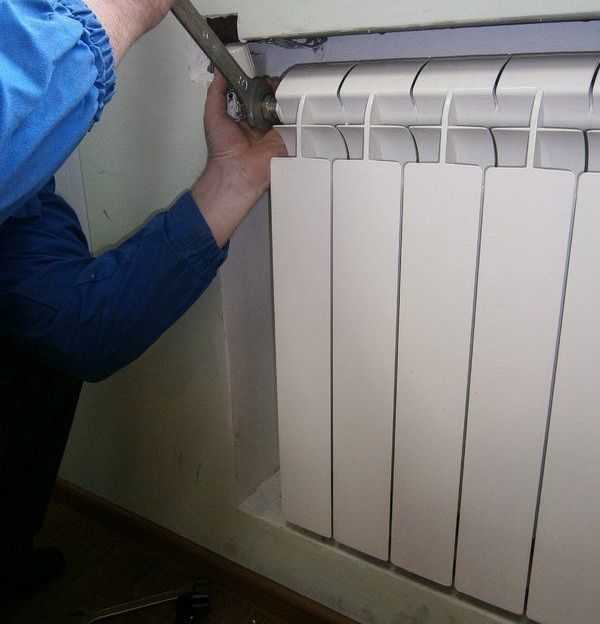

When planning to turn off centralized heating in an apartment building, you should always remember the following points:
- Discuss this opportunity with your neighbors. If there are supporters who want to make the same reconstruction in their own apartments, it will become much easier to resolve issues;
- Collect all the required documents;
- If in order to obtain permission you have to pay for the reconstruction of the heating main, think about whether the skin is worth the candle;
- Obtain a work permit;
- Purchase all the necessary equipment;
- Contact a special organization for help in carrying out the work;
- Please note that according to the adopted amendments from 2011, the transition to individual heating for one particular apartment has become practically impossible. Even when applying to the courts, not all cases are won by apartment owners. Therefore, it is best to turn off centralized heating at the request of the entire entrance or apartment building;
- Remember that for unauthorized disconnection from centralized heating, an individual is subject to a penalty established by law. In addition, all costs incurred for the renewal of district heating are also borne by the natural person who caused the damage;
- Any decision made should be good not only for one person, but also for those around him.
So, summing up all of the above, it is safe to say that it is quite possible for residents in an apartment building to refuse central heating, but only this process should proceed without violating the law.
How to legally refuse?
Refusal from the services of a heat supply organization presupposes a large amount of preliminary work:
- get the consent of neighbors;
- get a positive opinion from the service organization;
- order a refurbishment project;
- agree it with the gas (if necessary) and fire service;
- wait for a favorable response from the conversion commission.
Waiting for a fully completed package of documents can take several months, not counting financial costs.
It is impossible to give up central heating due to the long stay of people in the apartment and for the purpose of recalculation, since heating is a communal service that is not turned off even in the event of arrears. You will also have to pay for heat supply of entrances and basements as general building needs (clauses 86 and clauses 88 of the Rules on the Decree of the Government of the Russian Federation of 05/06/2011 №354).
What should be done to stop paying by giving up heating?
When the permit is received and the work on reinstalling the heat supply system has been completed, and receipts for payment for the service continue to come, the following package of documents must be submitted to the heating network to remove the owner from the register:
- A photocopy taken from the originals of the project documentation for the restructuring of the heating system.
- Provide a photocopy of the heat supply system acceptance certificate.
Additional documents may be required as the listings sometimes differ from region to region.
Solving the issue according to the law
Paying for heating, and is it cold at home? An alternative is heat meters.
The legislation of the Russian Federation did not prohibit the refusal of apartment owners (residents of public housing and tenants, of course, do not have the right to make such decisions) from centralized heating. However, the desire to use an autonomous heating system can be hampered by the features of home improvement. For example, if the disconnection of one consumer will require a complete re-equipment of the entire intra-house network and will affect other residents.
In order to do everything according to the law, before giving up heating in an apartment, you should obtain permits from:
- home owners (management company or housing cooperative), in the event that the elements of the heat supply system are part of the common property. Dismantling the pipes of the system without such permission is considered an unauthorized reduction of the home property and, by law, is allowed only during a major overhaul of the building;
- local government bodies, which are required to submit a project for restructuring the system and a package of relevant documents.
One of the best options is an electric underfloor heating on the balcony. The cheapest is infrared.
Even under the Soviet Union, they came up with the idea of making warm water walls. According to reviews, this is very convenient.
It is practically impossible to obtain such permits for tenants of only one apartment - first of all, because of the Federal Law No. 190 on heat supply. It is much easier to do this by deciding how to refuse heating in apartments, the whole house, or at least the entrance. In this case, the general water circuit of the building or one of the risers is rebuilt, and homeowners are able to install autonomous heating. However, due to the fact that the project affects every apartment, it can only be implemented by obtaining the consent of all residents at the in-house meeting and preparing the project documentation.
What's next
What equipment is better to prefer if you are going to install autonomous heating yourself?
Boiler
The optimal choice in terms of efficiency and ease of use is a condensing boiler with a storage water heater.
Why exactly he?
- The condensing circuit is more economical: it increases the boiler efficiency by 9-11% compared to classic gas boilers.
- The storage water heater guarantees a stable hot water temperature. Anyone who has ever used a flow-through gas water heater will understand the meaning of the recommendation: an attempt to take a shower results in a continuous struggle with the mixer.
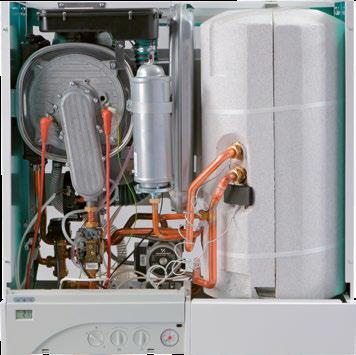

Condensing boiler with built-in boiler.
A typical modern boiler is equipped with at least a safety group - an air vent, a pressure gauge and a safety valve.Sometimes its design includes an expansion tank; in other cases, a membrane tank with a capacity of 10% of the total circuit capacity is mounted at any point in the autonomous system.
Pipes
The most practical solution is aluminum-reinforced polypropylene. Reinforcement does not so much increase the strength of pipes (it is already redundant for an autonomous circuit), but rather reduces thermal expansion.
Batteries
Our choice is sectional aluminum radiators. They combine low cost with decent appearance and excellent heat dissipation (about 200 watts per section). Each radiator is equipped with a valve at the inlet, a choke or thermal head at the outlet and an air vent in one of the upper plugs.
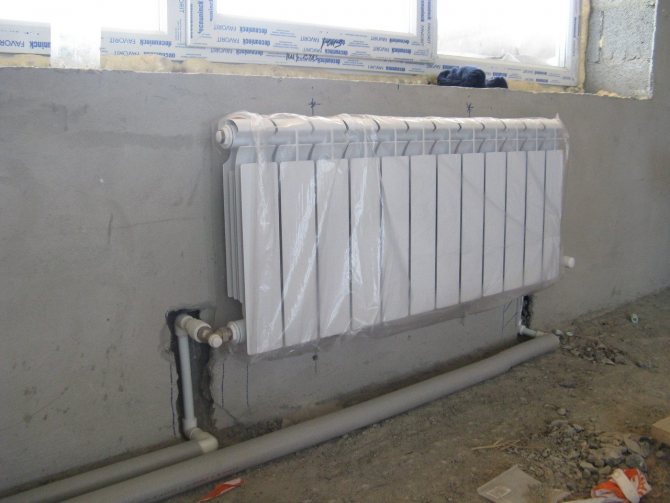

The photo shows the installed radiator.



